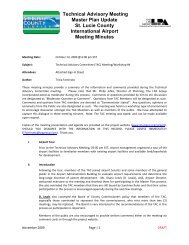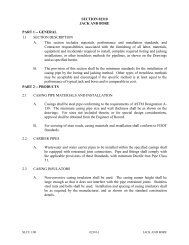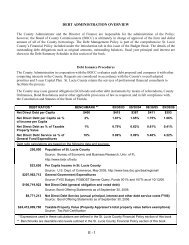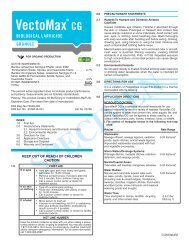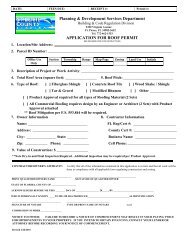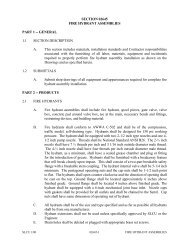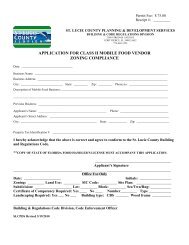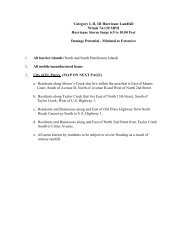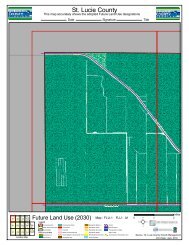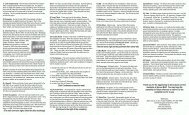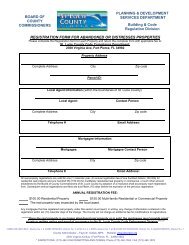Native Habitat Inventory Final Report 2004 - St. Lucie County
Native Habitat Inventory Final Report 2004 - St. Lucie County
Native Habitat Inventory Final Report 2004 - St. Lucie County
You also want an ePaper? Increase the reach of your titles
YUMPU automatically turns print PDFs into web optimized ePapers that Google loves.
Site Number: 44<br />
Site Rank: A Total Acreage: 367<br />
Edge Acreage: NA Percent Core to Edge: NA<br />
Table 1. Ecological Criteria Scores by Natural Community Type. This is an areaweighted<br />
average value score for each natural community present on site. Numbers in<br />
bold have significant above average resource value (>3.0). Natural Communities in bold<br />
have at least two of the content resource values (rarity, connectivity, and completeness)<br />
above average (>3.0). Overall Ecological Value = 0.87<br />
FNAI Natural<br />
Community Rarity Connectivity Completeness Vulnerability Manageability<br />
CU / Maritime<br />
Hammock 5.0 5.0 3.0 1.0 3.0<br />
XU / Scrub 5.0 5.0 3.0 1.0 3.0<br />
Key Features – This site contains some of the last large contiguous or near<br />
contiguous blocks of Maritime Hammock and coastal Scrub communities in the county.<br />
These rare communities often contain equally rare species such as large-flowered<br />
rosemary, nodding pinweed, inkberry, coastal hoary pea, Florida scrub jays, Florida mice,<br />
Florida scrub lizards, Sherman’s Fox Squirrel, barbed-wire cactus, fragrant prickly-apple,<br />
and reddish peperomia. This tract in combination with the adjacent existing conservation<br />
lands would likely be large enough to support viable populations of many of the rare<br />
plants and animals.<br />
Importance – In addition to containing some of the last large blocks of Maritime<br />
Hammock and coastal Scrub communities in the county, the protection of this site would<br />
also benefit the adjacent existing conservation lands. It would increase the total acreage,<br />
as well as create more core area that would be buffered from the effects of the edge (i.e.<br />
invasive exotic species and feral pets). It would also provide a buffer from development<br />
that often precludes active management (e.g. prescribed fire).<br />
Connectivity – Within 500 feet of existing conservation lands.<br />
Proximity to Urban Areas – Within 500 feet of an urban center.<br />
Proximity to primary and secondary roads – Within 500 feet of a major roadway.<br />
Table 2. Community Types present on site and their rankings.<br />
FNAI Natural Community Acreage FNAI Rank Global FNAI Rank <strong>St</strong>ate<br />
CU / Maritime Hammock 68.9 G4 S2<br />
XU / Scrub 298 G2 S2<br />
98




